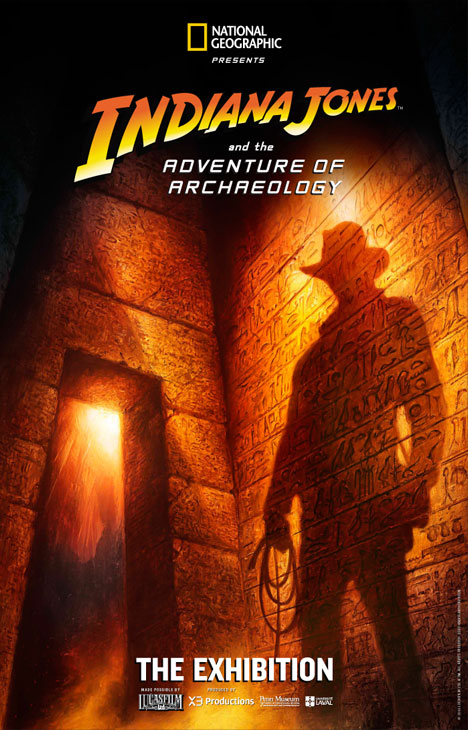
The adventures of Indiana Jones(TM) are film legend—and they're science too. In the National Geographic exhibition Indiana Jones(TM) and the Adventure of Archaeology, the world's most famous, fictional archaeologist inspires a new generation to dig deeper into the science and history of field archaeology. As they enter Indy's world, visitors discover how archeological objects advance scientific and historical knowledge.
Visitors to Indiana Jones(TM) and the Adventure of Archaeology can explore what clues and symbols modern archaeologists look for. Learners of all ages can find out why the connection between artifacts and their locations is so important, what techniques archeologists use to analyze and interpret, and how they sift fact from fiction.
Experience the exhibit in person at Telus World of Science in Edmonton, Canada through April 6, or starting May 14 at the National Geographic Museum in Washington, DC. You can also watch the Indiana Jones(TM) films wherever you live, then find related archaeology links, videos, interviews, and more on the exhibit website. At Howtosmile.org, you can dig into hands-on archaeology activities and imagine you're an Indiana Jones(TM) of the future. How would you unearth and study artifacts of human life as we live it today? Based on those artifacts, how would you envision what life was like in the early 21st century?
In the Piecing It All Together activity, learners can create their own piece of history by decorating, shattering, and piecing together a flowerpot "artifact." This helps show how archaeologists analyze fragments to literally piece together an understanding of history. In the If Trash Could Talk activity, learners take a close look inside their trash can and think about the clues it offers about their lives. Learners separate the layers of the trash, make a checklist of the items found and where, and then answer questions to interpret their findings.
In the Do Your Own Dig outdoor activity, learners use household materials to assemble a tool kit, set up a dig site, dig for and record artifacts, photograph, bag and label findings, and analyze their observations. In the Looking Back Through Time activity, learners create their own archaeological profiles to discover the fundamental nature of an archaeological site: objects and features found deeper in the ground were placed there before those found higher up.
In the Create Your Own Time Capsule activity, learners can even build their own time capsule and choose a storage location and date to reopen the capsule. While constructing, learners are asked to consider how people in the future might interpret the objects inside.
